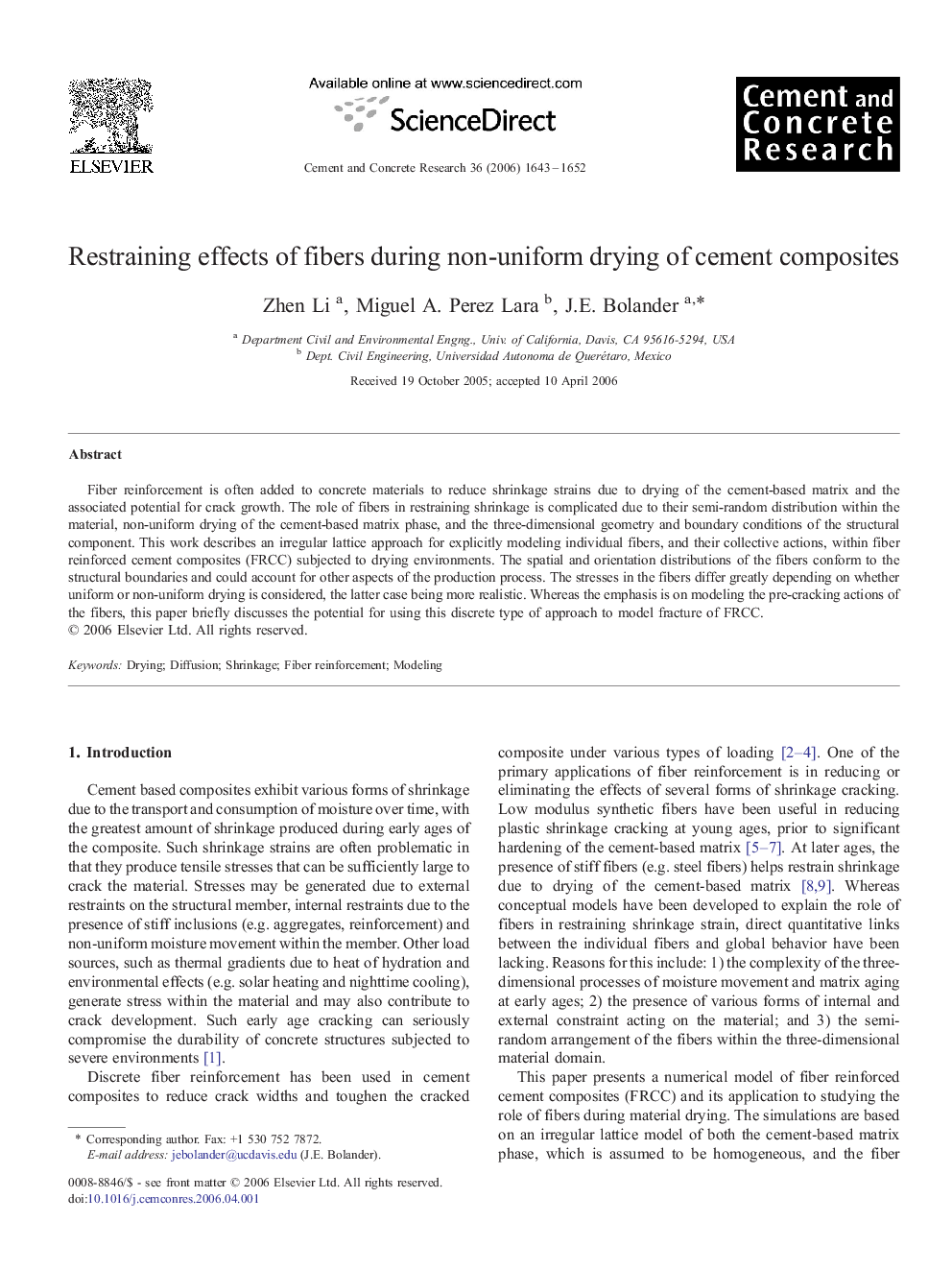| Article ID | Journal | Published Year | Pages | File Type |
|---|---|---|---|---|
| 1458078 | Cement and Concrete Research | 2006 | 10 Pages |
Fiber reinforcement is often added to concrete materials to reduce shrinkage strains due to drying of the cement-based matrix and the associated potential for crack growth. The role of fibers in restraining shrinkage is complicated due to their semi-random distribution within the material, non-uniform drying of the cement-based matrix phase, and the three-dimensional geometry and boundary conditions of the structural component. This work describes an irregular lattice approach for explicitly modeling individual fibers, and their collective actions, within fiber reinforced cement composites (FRCC) subjected to drying environments. The spatial and orientation distributions of the fibers conform to the structural boundaries and could account for other aspects of the production process. The stresses in the fibers differ greatly depending on whether uniform or non-uniform drying is considered, the latter case being more realistic. Whereas the emphasis is on modeling the pre-cracking actions of the fibers, this paper briefly discusses the potential for using this discrete type of approach to model fracture of FRCC.
